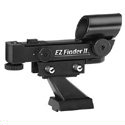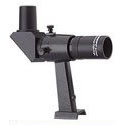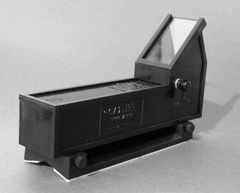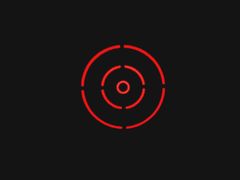
Telescope finders, often referred to simply as finderscopes, are crucial accessories for astronomers, both amateur and professional. They assist in locating celestial objects and aligning the primary telescope. This guide delves into the types, uses, and considerations when choosing a telescope finder.
What is a Telescope Finder?
A telescope finder is a small, auxiliary telescope or sighting device mounted on the main telescope. Its purpose is to help the user locate and center objects in the larger telescope's field of view. Because the field of view in a high-powered telescope is narrow, the finder provides a wider perspective, making it easier to locate objects.
Types of Telescope Finders
Red Dot Finders

- Description: These are non-magnifying finders that project a red dot or reticle onto a glass screen.
- Advantages: Simple to use, no need to focus, lightweight, and typically inexpensive.
- Disadvantages: Limited precision for very faint objects, can be affected by bright surrounding lights.
Reflex Finders
- Description: Similar to red dot finders but often offer more sophisticated reticle options.
- Advantages: Wide field of view, ease of use, various reticle patterns for different observing needs.
- Disadvantages: Generally more expensive than basic red dot finders, still limited for faint objects.
Optical Finder-scopes

- Description: Small telescopes with low magnification (usually between 6x and 9x) and crosshairs to aid in targeting.
- Advantages: Provides magnification to see faint objects, usually with better precision than non-magnifying finders.
- Disadvantages: Can be bulkier, requires focusing, may need alignment adjustments.
Telrad Finders
 |  |
- Description: A reflex sight that projects a set of concentric circles onto a glass screen, showing the position of the telescope.
- Advantages: Very intuitive with its large, easy-to-see reticle, provides three circles for more accurate alignment, great for star hopping.
- Disadvantages: Bulkier than some other finders, requires power for illumination, not as precise as magnifying finders for faint objects.
Choosing the Right Finder
When selecting a telescope finder, consider the following factors:
Purpose and Skill Level
- Beginners might prefer red dot or reflex finders for their simplicity.
- Intermediate and advanced users might opt for optical finderscopes, laser finders, or Telrad finders for better precision and capability to locate fainter objects.
Type of Observing
- Planetary and lunar observers might find non-magnifying finders sufficient.
- Deep-sky observers often benefit from the magnification of an optical finderscope or the versatility of a Telrad finder.
Telescope Compatibility
- Ensure the finder can be easily mounted on your telescope. Some telescopes come with built-in brackets for specific types of finders.
Environment and Conditions
- If you observe in a light-polluted area, a laser finder may not be as effective. In very dark skies, any type will work well.
Alignment and Calibration
Proper alignment of the finder with the main telescope is crucial for effective use. Follow these steps for alignment:
Daytime Alignment
- Point your main telescope at a distant, fixed object (like a radio tower or distant tree).
- Center the object in the telescope’s field of view.
- Adjust the finder so the object is centered in its crosshairs or reticle.
Nighttime Fine-Tuning
- Choose a bright star or planet.
- Center it in the main telescope.
- Adjust the finder for precision.
Maintenance and Care
- Clean the lenses periodically with a lens brush or blower to remove dust.
- Check alignment regularly, especially if the telescope is moved frequently.
- Replace batteries in electronic finders, such as red dot or laser finders, to ensure proper functionality.
A well-chosen and properly aligned telescope finder can significantly enhance your stargazing experience. Whether you opt for a simple red dot finder, a sophisticated optical finderscope, or the versatile Telrad finder, understanding their uses and advantages will help you make the most of your time under the stars. Happy observing!
